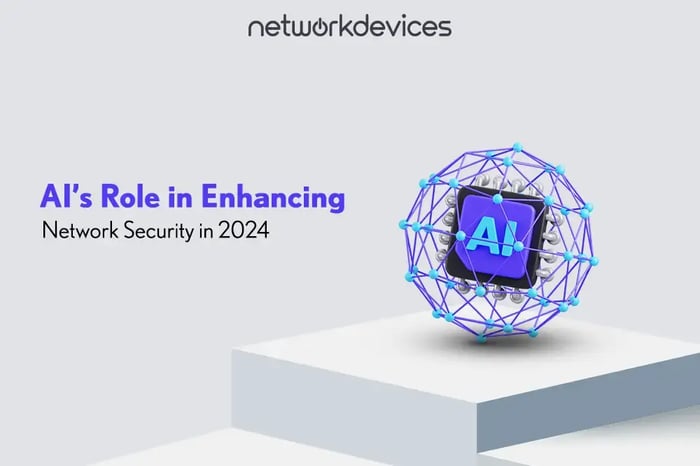You have no items in your shopping cart.
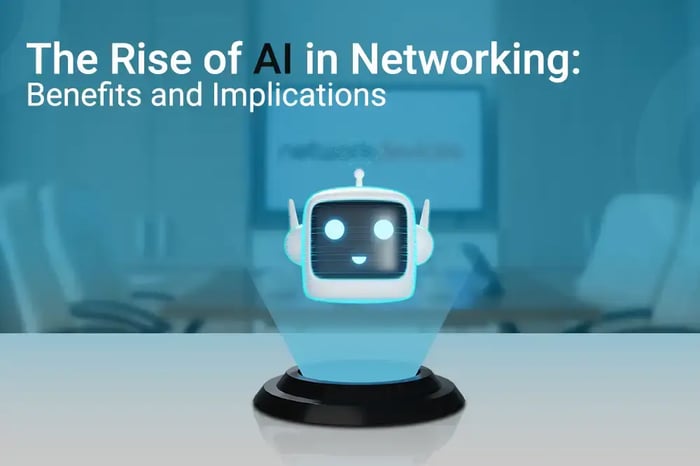
The Rise of AI in Networking: Benefits and Implications
Discover the benefits of using AI in networking, including enhanced communication, security, and self-optimization, focusing on Cisco DNA and Juniper Mist.
The significant rise of AI in networking has allowed businesses to radically change traditional networking methods. In recent times, the use of AI in networking enables:
· Faster communication
· Learning traffic patterns more effectively
· Analyzing files and traffic behavior entering the network
· Self-analysis and optimizations
AI in networking can also predict potential threats, cyber-attacks, and system failures by studying the data, logs, and traffic behavior.

Several factors can simplify the existence and integration of AI in networking:
1. Distributed and complex network infrastructures are often hectic to optimize and manage appropriately. AI helps analyze and optimize large networks with ease by using algorithms and supervised learning.
2. The need for secure and automated network operations like zero-touch deployment, policy provisioning, and rule-based optimization while reducing the space for human error.
3. The rising concern for network security is another critical factor currently being addressed globally with the help of AI. AI can identify and mitigate cyber threats and risks by detecting abnormal system or traffic behavior and anomalies.
4. AI can also achieve the need for automated monitoring and deep visibility into the network. It can learn from historical data and can enforce strict granular ACLS.
What is artificial intelligence?
AI is the simulation of human intelligence possessed by machines or systems that have been programmed and designed to think, act, communicate, and respond like humans. This technology is currently shaping digital transformation in the world. AI is now used in various applications, including IoT, security systems, automated chatbots, and various other industries such as medical, defense, and research.

AI simulates intelligent and faster decision-making in computer systems and programs. These intelligent systems are trained by programming and feeding large data sets into them. Some AI technologies that are highly used to develop advanced technologies and for R&D are machine learning, robotics, and natural language processing. AI/ML training can be supervised or unsupervised, often called Supervised Learning & Unsupervised Learning.
The Rise of AI
AI has come a long way from a research concept to practical integration and implementation in real-world technology. It is a topic of study and research that started decades ago.
AI has become popular because ML systems, robotics, language, and image processing technology have become so advanced and now consist of vast data. And with the help of AI, these technologies are made faster, safer, and better in decision-making.
We can already see AI making vast and positive impacts in automation, IoT, networking, security, healthcare, transportation, education, and R&D.

The potential rise and use of AI in various fields have also raised concerns about how ethical it is to replace human/labor tasks with AI that directly affects employment.
The field and applications of AI are rising and expanding at a larger scale. It is difficult to predict how AI will look in the future. However, one thing is certain: AI is increasingly being adopted by governments and businesses due to advancements and easy accessibility.
Advantages of AI in Networking
Artificial Intelligence has great potential in optimizing, managing, troubleshooting, minimizing threats, and unleashing single points of system failures. As modern networks have become distributed and complex by design, AI integration in networking equipment and software enables administrators to enforce granular control, automate policy provisioning, and strengthen security by inspecting network packets. It is used to respond to problems in real-time and predict failures before they occur.
How is AI transforming networking?
AI with ML-powered systems and technologies provides alerts, analytics, and deep visibility into traffic. This feature helps IT teams to proactively and accurately identify failures, false positives, anomalies, and root cause analysis. AI can also learn from its own responses and improve decision-making. Some of the use cases and benefits of using AI in networking are:
· Improve network performance
· Policy optimization
· Automated policy provisioning
· AI-enabled deep analytics
· Advanced threat and failure detection
· Traffic behavior analysis
· Less false positives
· Assisted troubleshooting
· Expert suggestions
· Predict user experience
· Detect anomalies
· Faster decision-making
Cisco DNA with Integrated AI capabilities
Cisco DNA is an AI-powered SDN solution that uses artificial intelligence and machine learning to automate and process network operations, automated device onboarding, and provisioning. It improves network performance and offers network optimization while providing profound insights with network analytics.
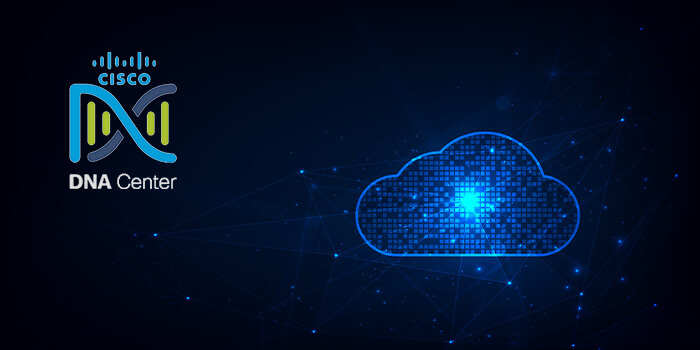
Cisco DNA solves today's complex networking problems by eliminating the need for manual troubleshooting and significantly reducing time and effort for IT teams.
When integrated with Cisco DNA, network devices are transformed into censors for AI/ML to extract the necessary data from all data. The Cisco DNA dashboard is simplified to show the overall status, errors, and flag issues. With Cisco DNA enabled in the network, IT teams can expand the networks across the Campus/office/branches. This will create time to look after other critical projects.
How does the AI-powered Cisco DNA work?
It collects streaming telemetry data from devices, endpoints, users, and various applications across the network infrastructure. The Cisco AI Network Analytics is then used to define the level of performance needed for optimal user experience and application performance. It then further derives insights into optimization options. The insights are compared to network policies regarding automation to help ensure network performance and operations are aligned.
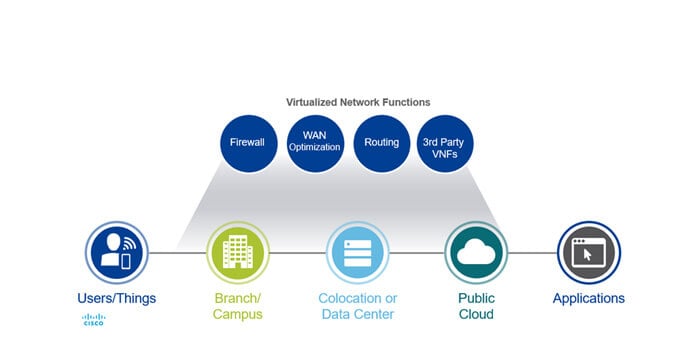
The outcomes are delivered on the client device health dashboards for further details.
Issues that require attention are flagged and can be clicked to view suggested remediation.
Cisco DNA uses AI in several ways:
1. Network analytics: It uses AI to analyze network data and identify patterns, allowing it to predict and prevent unwanted network issues.
2. Automated provisioning: DNA can automate tasks such as provisioning and configuring network resources, improving efficiency while reducing the risk of human error.
3. Network optimization: The Cisco DNA with AI can analyze network traffic patterns and identify bottlenecks, allowing for efficient data routing and improved network performance.
Unleash performance with Juniper Mist powered by AI
Juniper Mist is a wired, wireless, and WAN assurance cloud-based technology that empowers enterprises to enjoy automated operations, performance, and better service levels. It uses machine learning to analyze data moving from and to devices in a network infrastructure. It can identify traffic patterns from obtained data and predict network issues and bottlenecks in real time. Machine learning algorithms simplify onboarding and health insights and optimize network performance.

Juniper Mist reduces the onsite visit burdens for IT teams while significantly reducing operational costs and time. It offers reliable connections with the help of AI monitoring and optimization characteristics. Mist AI makes the network more predictable, measurable, and reliable.
How does Mist AI work?
Juniper Mist uses a mixture of AI/ML and data science techniques to enhance user experience and simplify wired or wireless access onboarding operations.
Data is fetched or taken from multiple sources in a Mist environment for deeper insights, including Mist APs, firewalls, switches, and routers. The devices work in correlation with Mist AI technology to enhance user interactions from on-premise clients to cloud services.
This includes:
· Automated event correlation
· Root cause analysis
· Network assurance
· Self-driving network
· Proactive anomaly detection
Juniper claims that Mist AI is also used in customer services and support. Also, Mist AI is behind Marvis, which is one of its kind and the first in the networking industry. It is often termed one of the first AI-driven virtual network assistants.
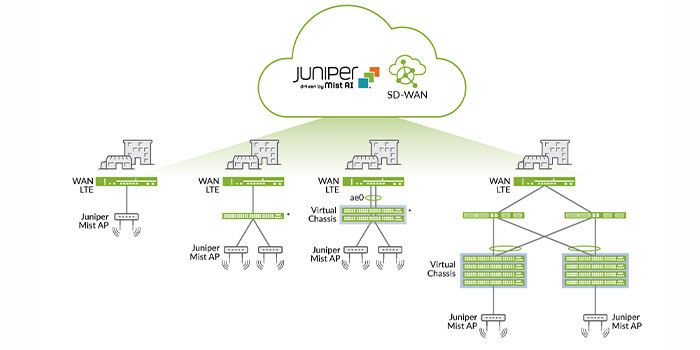
How Juniper Mist uses AI in networking
· The supervised ML characteristic correlates events for faster root cause analysis.
· Time-series anomaly detection for negative trend identification and their adverse impact on the network.
· Natural language processing to make complex queries simple and faster.
· Deeper impact analysis with AI-driven virtual assistant Marvis to correlate events across the network.









